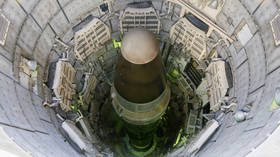Scientists ecstatic over 'new age' beginning
The final testing of The Large Hadron Collider – the world's largest underground particle accelerator – was completed successfully in Switzerland on Wednesday, according to European Organisation for Nuclear Research (CER
Scientists have successfully activated particle beams within the 27-kilometre long ring and started collecting experimental data.
If the results of the final test are deemed successful, the next launch of the particles will be set on a colliding course.
“It’s a moment when the universe was created, so energy density was much higher. There was an incredible number of particles, most of which though, were not stable. Recreating this density we hope to create these particles too. So we are moving closer to our understanding of the Big Bang,” Pavel Nevsky Senior scientist of CERN Laboratory said prior to the launch.
Concerns denied
The Collider has been described as tampering with nature by some.
Sceptics have filed suits in the European Court of Human Rights to stop the experiment. Concerns are that the Collider might create micro ‘black holes’ that would swallow the planet.
The project’s scientists – some of whom have been getting death threats – have flatly denied the concerns, vowing they took all the necessary safety measures.
This is the fifth operating particle collider in the history of science. The fourth one – The Relativistic Heavy Ion Collider (RHIC) – faced similar fears, when launched in 2000 and proved them groundless.
Seven thousand minds in work
Some 7,000 scientists from 80 countries are operating the LHC in a hope to find a previously unseen kind of particles. Dozens of grand unified theories will be proven true or false.
The most significant of these theories is the Higgs mechanism for generating elementary particle masses. Physicists have long puzzled over how particles acquire mass.
Others deal with issues like quark masses, gravity, symmetry between matter and antimatter, extra dimensions, the nature of dark matter and dark energy, as well as the possibility of time travel.
Hawking doesn’t believe in ‘God particle’
One of the most famous physicists in the world, Briton Stephen Hawking, has bet $100 that the Higgs boson – a hypothetical massive scalar elementary particle, very unstable and thus not yet observed in material world – won’t be observed this time either.
“I think it will be much more exciting if we don't find the Higgs. That will show something is wrong, and we need to think again,” Hawking said in an interview to BBC radio.
In 1964 Peter Higgs (certain others did it separately at the same period), came up with an idea that there must exist a background field passing through which particles would acquire mass by being dragged through a mediator.
The mediator was dubbed the Higgs Boson, later becoming known as the ‘God Particle’, as it is theoretically everywhere but remains elusive.
According to Hawking, the Collider will increase the energy at which we can study particle interactions by a factor of four, which may lead to discovery of supersymmetric partners to known particles.
“Their existence would be a key confirmation of string theory, and they could make up the mysterious dark matter that holds galaxies together,” he said.












